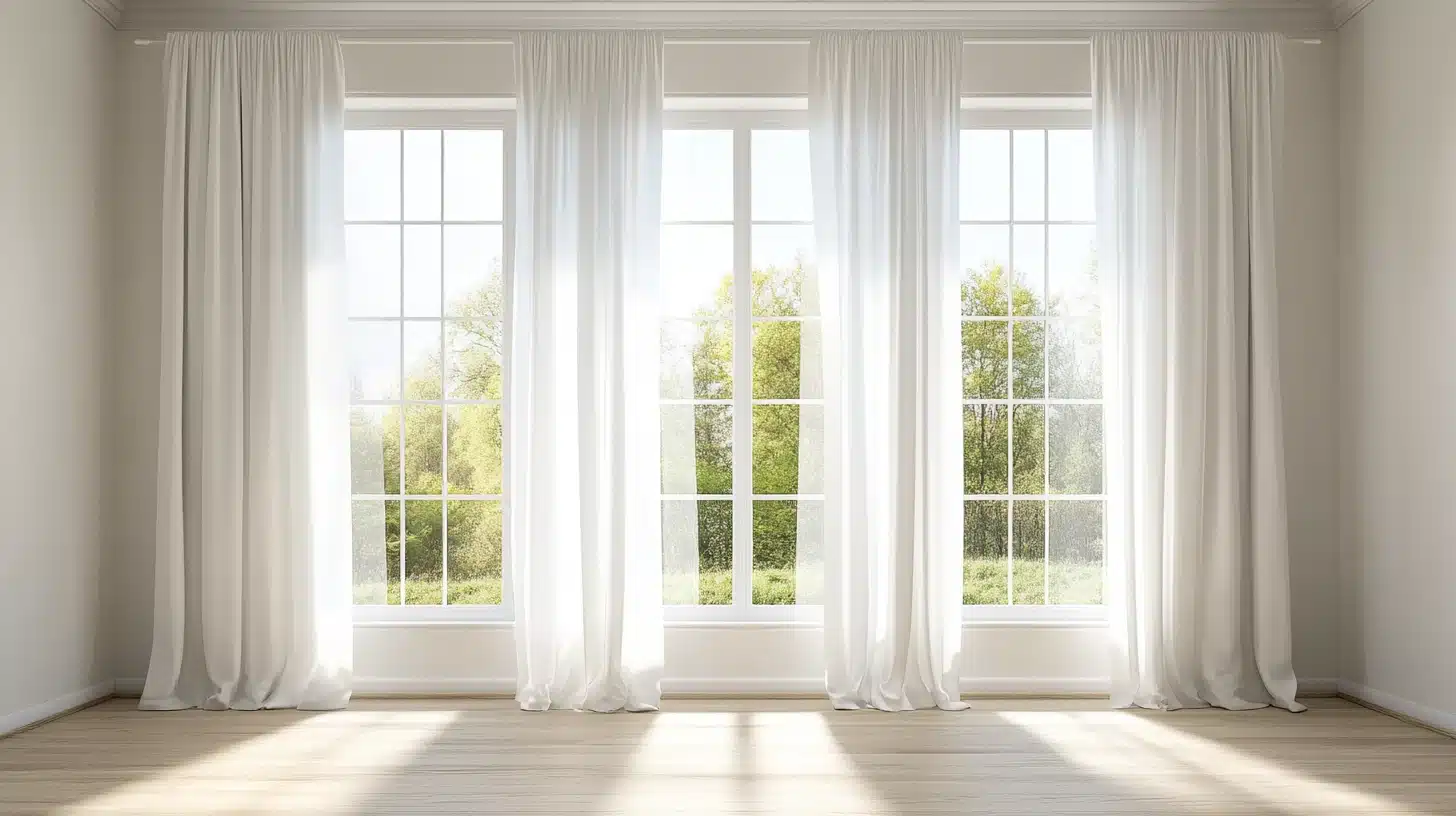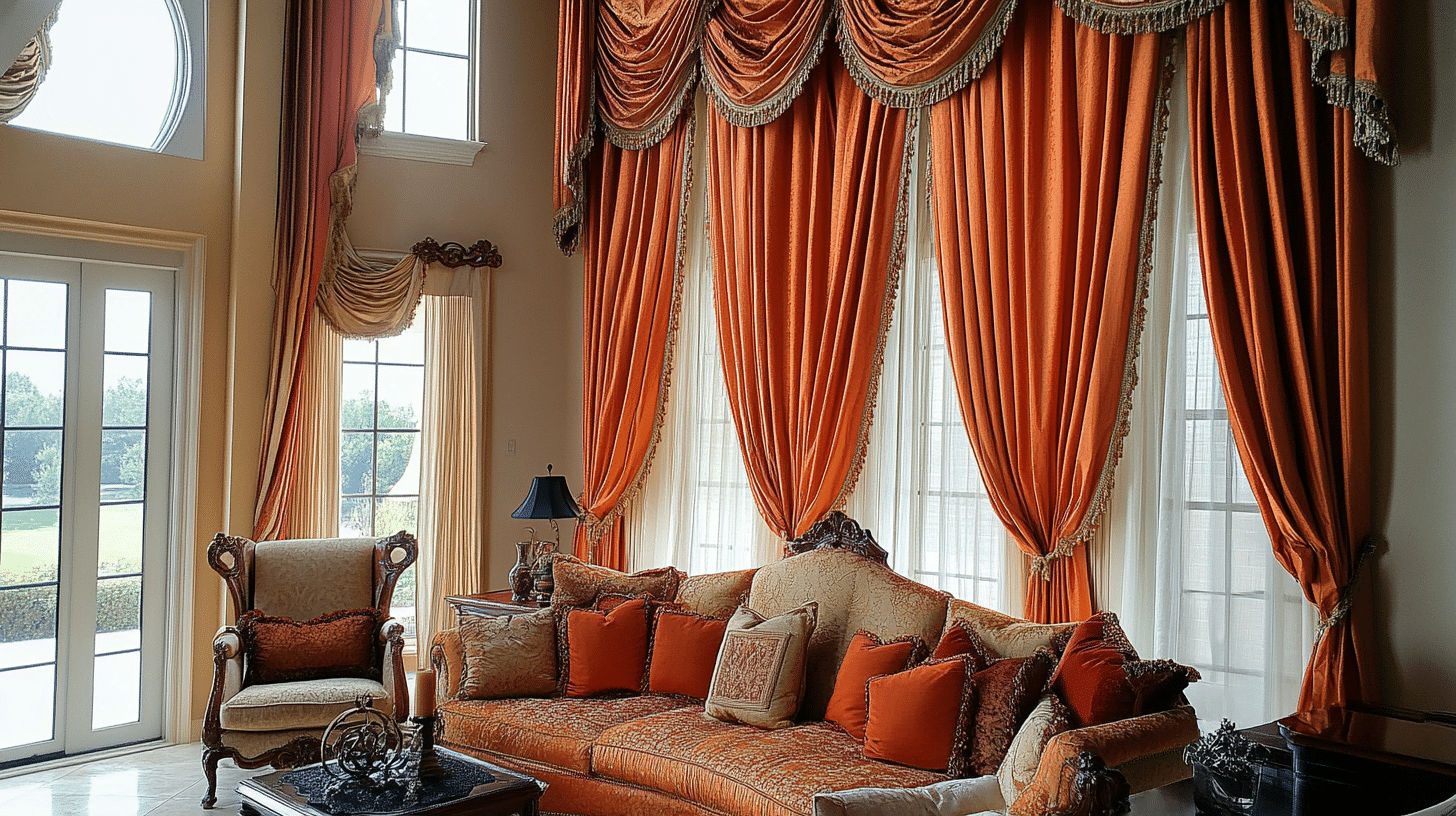What Are the Best Curtain Options for Windows Facing Direct Sunlight?
Windows facing direct sunlight can present a challenge for homeowners seeking both comfort and style. Choosing the right curtains is crucial for managing heat, glare, and UV rays while maintaining an inviting atmosphere. The best curtain options for sun-drenched windows include blackout curtains, thermal-lined drapes, and light-filtering sheers.
Blackout curtains offer maximum sun protection, blocking up to 99% of light and reducing heat transfer. Thermal-lined drapes provide excellent insulation, keeping rooms cooler in summer and warmer in winter. Light-filtering sheers allow natural light to enter while diffusing harsh rays, creating a soft, ambient glow.
When selecting curtains for sunny windows, consider factors such as fabric weight, color, and hanging style. Lighter colors reflect more heat, while darker shades absorb it. For those seeking professional guidance, On the other hand, choosing thicker fabrics or curtains with thermal lining, such as the ones offered from retailers like Direct Fabrics curtain supplier in the UK, can help block out more sunlight and keep the room cooler during hot months.
Opting for layered window treatments, such as pairing sheer curtains with blackout panels, allows for greater flexibility in light and temperature control throughout the day.
Key Takeaways
- Choose curtains based on your desired level of light control and insulation
- Consider fabric weight, color, and hanging style for optimal sun protection
- Explore options like blackout, thermal-lined, and sheer curtains for different effects
Identifying the Right Material and Style

Choosing appropriate curtains for sun-facing windows involves careful consideration of fabric, color, and style. The right combination can effectively manage sunlight while enhancing your decor.
Fabric Types and Weaves for UV Protection
Heavier fabrics like velvet and lined linen offer excellent UV protection. Blackout curtains use tightly woven fibers to block up to 99% of light. Thermal curtains feature insulating layers to regulate temperature.
Linen curtains provide a natural, breathable option with moderate light filtering. For maximum sun protection, look for curtains with UV-resistant coatings or treatments.
Medium-weight cotton blends balance light control and airflow. Polyester curtains resist fading and offer durability in sunny spots.
The Role of Color and Pattern in Sunlight Management
Light colors reflect heat, keeping rooms cooler. White, cream, and pale pastels work well in sunny spaces. Medium-colored draperies absorb some light without darkening rooms excessively.
Dark hues block more light but can fade over time. Opt for fade-resistant fabrics if choosing deep tones.
Patterns can disguise sun damage and add visual interest. Small, dense prints hide fading better than large, sparse designs.
Selecting Between Drapes, Curtains, and Shades
Drapes offer full coverage and insulation. Floor-length styles provide maximum light control. Curtains allow for more versatility in length and fullness.
Roman shades fold neatly, suiting modern decors. They’re effective at blocking light when fully lowered.
Roller shades offer sleek, minimal profiles. Many feature light-filtering or room-darkening options.
Honeycomb shades trap air for added insulation. Their cellular structure blocks light while maintaining a slim appearance.
Enhancing Efficiency and Automation
Optimizing window treatments for sun-facing windows involves combining energy efficiency with smart automation. These solutions reduce heat gain and loss while providing convenient control over sunlight and privacy.
Energy Efficient Treatments to Reduce Heat Gain and Loss
Cellular shades are highly effective at insulating windows. Their honeycomb structure traps air, creating a barrier against heat transfer. Reflective blinds bounce sunlight away from the interior, minimizing solar heat gain.
Window films offer another layer of protection. They block UV rays and reduce glare without obstructing views. Some films can reject up to 80% of solar heat.
Exterior treatments like awnings or solar screens intercept sunlight before it reaches the glass. This can significantly decrease cooling costs in hot climates.
Automated Systems for Optimal Sunlight Control
Motorized curtains and blinds allow precise control over light levels throughout the day. Users can program schedules to automatically adjust window coverings based on sunlight intensity or time of day.
Smart systems integrate with home automation hubs. They can respond to temperature sensors or voice commands for hands-free operation. Some even use GPS to track the sun’s position for optimal shading.
Automated treatments can be synced with HVAC systems to maximize energy savings. As shades close during peak heat, air conditioning needs decrease.
Choosing the Right Curtain Rods and Installation Techniques
Heavy-duty curtain rods support the weight of insulating drapes. Look for rods with a diameter of at least 1.5 inches for stability.
Ceiling-mounted tracks allow curtains to seal against walls, enhancing their insulating properties. This installation method is ideal for blackout curtains in bedrooms.
Wraparound rods extend past window frames, eliminating light gaps at the edges. This improves both light control and energy efficiency.
Consider motorized rods for seamless integration with automated systems. They often come with quiet motors and can be controlled via smartphone apps.
Conclusion
Choosing the right curtains for windows facing direct sunlight is crucial for maintaining comfort and energy efficiency. Lined curtains, blackout options, and light-filtering fabrics offer varying degrees of sun protection and heat reduction. Consider factors like material, color, and style to find curtains that balance functionality with aesthetics. With the right selection, homeowners can effectively manage sunlight, temperature, and privacy while enhancing their interior decor.







